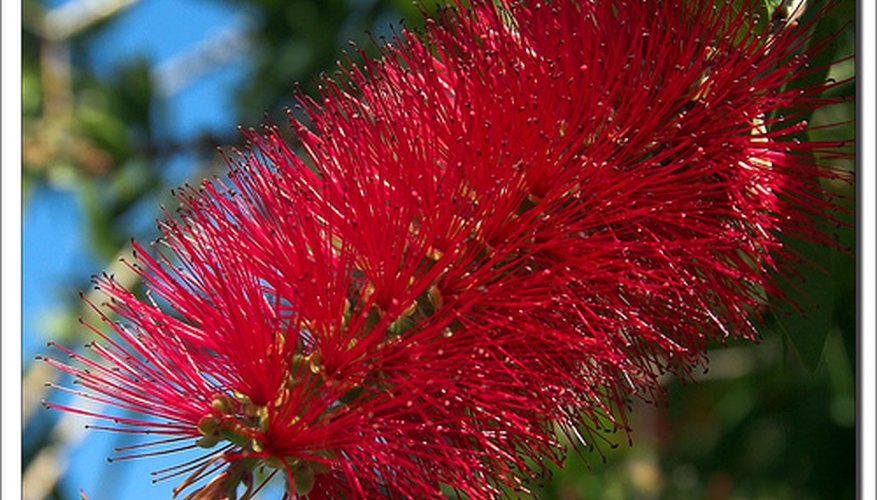Bottlebrushes are popular trees in the landscape. Their flowers look like a long red bottle brush and that's how they received their name. Propagating cuttings from a bottlebrush plant isn't that hard and you'll use the basic method of propagating cuttings to do so. Bottlebrushes are woody plants and propagating them by cuttings is a frequent method that is used to maintain the look of the parent plant. Propagating a plant through cuttings is called asexual propagation and is used for quite a few species other than just the bottlebrush.
- Bottlebrushes are popular trees in the landscape.
- Propagating cuttings from a bottlebrush plant isn't that hard and you'll use the basic method of propagating cuttings to do so.
Dip the end of your pruning clippers into alcohol to remove any bacteria that may be present on them. You don't want to infect your cutting with foreign bacteria that may keep it from rooting.
Fill your container where you will be placing the cutting with vermiculite. Vermiculite has no organic properties in it and will help the cuttings remain standing and will allow oxygen to get to the rooting area so the cuttings will develop. You want a planting medium that will retain moisture but will also drain, is sterile and has few fertility properties in it. Water the potting medium before you place the cutting into it.
- Fill your container where you will be placing the cutting with vermiculite.
- Vermiculite has no organic properties in it and will help the cuttings remain standing and will allow oxygen to get to the rooting area so the cuttings will develop.
Snip your cutting below a node. You will need at least one node to be planted into the medium for the cutting to grow roots. With most woody plants, it's best to take your cutting in the fall or when the plant has become dormant. It's also best to take a cutting that is from a newer stage of the plant and isn't too woody. Woody plants seem to root better when cuttings are taken during this dormant stage.
Remove any leaves or other growth that is present below the node area that will be placed into the potting medium. Don't use a cutting that has flowers on it or you'll need to remove them. You want your cutting putting all the energy into developing roots, not flowers.
Remove some rooting hormone from its container and place it into another dish. You don't want to contaminate your container of rooting hormone if the cutting is infested with something. Dip the end of your cutting that will be planted into the medium into the rooting hormone and shake off any excess. Be sure to cover at least one node of the cutting in rooting hormone.
- Remove any leaves or other growth that is present below the node area that will be placed into the potting medium.
- You don't want to contaminate your container of rooting hormone if the cutting is infested with something.
Stick the end of your cutting that has been dusted in rooting hormone into the container of vermiculite deep enough to where your cutting is able to stand on its own. Remember to place at least one node of the cutting into the potting medium.
Place your container and the cutting in an area that will receive bright, direct light. Keep your container moist while the cutting is trying to form roots. Your bottlebrush cutting should start to form roots within a few weeks. After your cutting has established itself into the container of vermiculite, you can plant it in another container that holds a potting mix or plant it directly in the ground.
